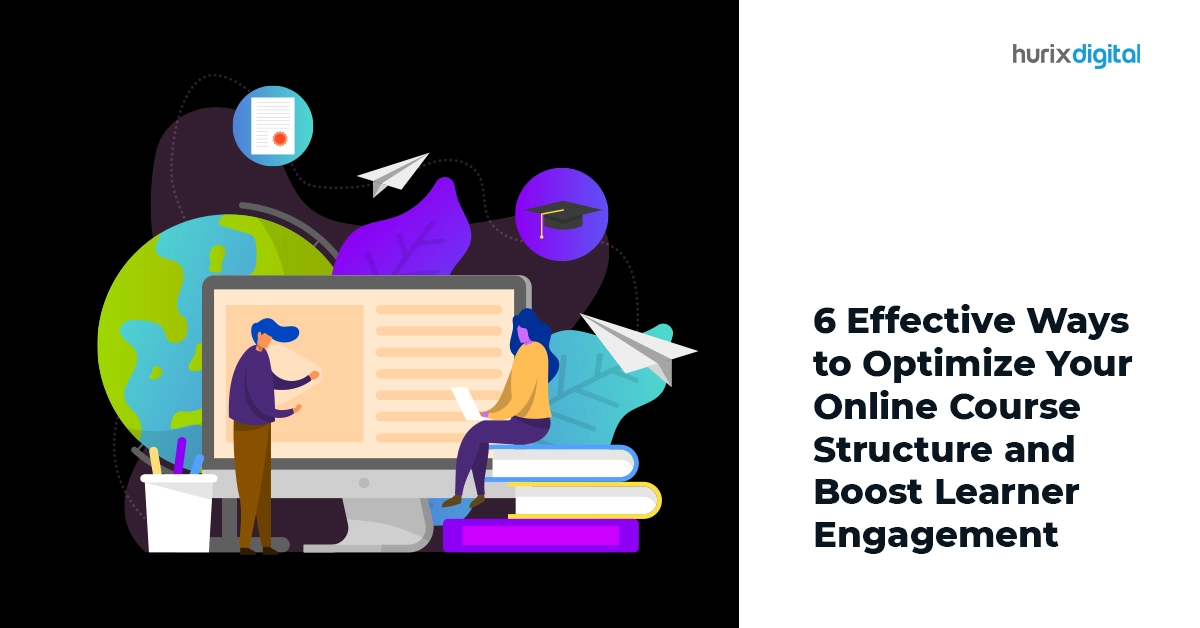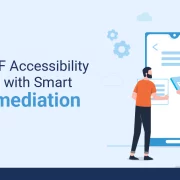
6 Effective Ways to Optimize Your Online Course Structure and Boost Learner Engagement
Online education is booming, with reports showing that the global online education market is expected to reach a projected market volume of $257.70 BN by 2028, experiencing an annual growth rate (CAGR 2024-2028) of 8.61%. This is why it is not surprising that more and more learners are opting for online courses to acquire new skills, advance their careers, or pursue their passions.
However, online education also comes with its own set of challenges. One of the biggest challenges is how to structure your online course in a way that facilitates effective learning and delivers positive outcomes. Unlike traditional classroom settings, online courses require more planning, design, and organization to ensure that learners stay motivated, engaged, and satisfied throughout the course.
In this blog, we will share with you 6 strategies that will help you overcome challenges with online classes and enhance your learning experience.
Table of Contents:
- Define Your Learning Objectives and Outcomes
- Align Your Content with Your Learning Objectives and Outcomes
- Chunk Your Content into Manageable Units
- Use a Variety of Content Formats and Media
- Incorporate Feedback and Assessment Mechanisms
- Provide Personalized Learning Experiences
- Conclusion
Define Your Learning Objectives and Outcomes
The first step in structuring your online course is to define your learning objectives and outcomes.
Learning objectives are the specific, measurable, and achievable goals that you want your learners to accomplish by the end of the course. They are the observable and verifiable results that demonstrate that your learners have achieved the learning objectives.
Defining your learning objectives and outcomes will help you to:
- Clarify the purpose and scope of your course
- Identify the knowledge, skills, and attitudes that your learners need to acquire
- Design your content and activities to support your learners’ progress
- Evaluate your learners’ performance and provide feedback
- Measure the effectiveness and impact of your course
To define learning objectives and outcomes, you can use the SMART framework, which stands for Specific, Measurable, Achievable, Relevant, and Time-bound.
Align Your Content with Your Learning Objectives and Outcomes
Content is the information, resources, and materials that you provide to your learners to help them achieve the learning objectives and outcomes. It can include text, images, videos, audio, animations, simulations, quizzes, games, etc.
Aligning your content with your learning objectives and outcomes will help you to:
- Ensure that your content is relevant, accurate, and up-to-date
- Avoid unnecessary or redundant information that may confuse or overwhelm your learners
- Organize your content in a logical and coherent sequence that follows the learning progression
- Enhance your content’s quality, credibility, and value
To align your content with your learning objectives and outcomes, you can use the backward design approach, which involves three steps:
- Start with the end in mind: Identify the learning objectives and outcomes that you want your learners to achieve
- Determine the evidence: Decide how you will assess your learners’ achievement of the learning objectives and outcomes
- Plan the learning experiences: Select and design the content and activities that will prepare your learners for the assessment
Also Read: 10 eLearning Design Techniques for Improved Learner Engagement
Chunk Your Content into Manageable Units
Chunking is the process of breaking down your content into smaller, meaningful, and digestible pieces that are easier for your learners to process, understand, and remember.
Chunking is based on the principle of cognitive load theory, which states that human memory has a limited capacity and can only handle a certain amount of information at a time.
Chunking your content into manageable units will help you to:
- Reduce the cognitive load and mental effort required by your learners
- Increase the retention and recall of information by your learners
- Improve the readability and navigation of your course
- Enhance the learner’s sense of accomplishment and progress
To chunk your content into manageable units, you can use the following guidelines:
- Use headings and subheadings to organize your content into sections and subsections
- Limit each chunk to one main idea or concept that supports your learning objective
- Use bullet points, lists, tables, graphs, etc., to present your content in a concise and clear way
- Use white space, colors, fonts, images, etc., to create contrast and visual hierarchy
- Provide summaries, transitions, and links to connect your chunks and guide your learners
Use a Variety of Content Formats and Media
Content formats and media are the different ways of presenting your content to your learners, such as text, images, videos, audio, animations, simulations, quizzes, games, etc. Using a variety of content formats and media will help you to:
- Cater to the different learning styles and preferences of your learners.
- Stimulate the different senses and cognitive processes of your learners.
- Increase the engagement and interest of your learners.
- Enhance the richness and diversity of your course.
To use a variety of content formats and media, you can use the following tips:
- Choose the content format and media that best suits your learning objective, content, and audience.
- Balance the use of different content formats and media to avoid monotony or overload.
- Use multimedia principles to optimize the design and delivery of your content, such as:
- Aligning words and images
- Reducing extraneous information
- Adding narration and captions
- Segmenting and signaling
- Personalizing and humanizing
- Test and optimize your content for different devices and platforms.
Incorporate Feedback and Assessment Mechanisms
Feedback and assessment are the methods and tools that you use to measure and improve your learners’ performance and learning outcomes. They can be formative or summative, formal or informal, self or peer, etc.
Incorporating feedback and assessment mechanisms will help you to:
- Monitor and track your learners’ progress and achievements
- Provide timely and constructive feedback to your learners
- Identify and address your learners’ strengths and weaknesses
- Motivate and challenge your learners
- Evaluate and improve your course
To incorporate feedback and assessment mechanisms, you can use the following strategies:
- Align your feedback and assessment with your learning objectives and outcomes
- Use a variety of feedback and assessment methods and tools, such as:
- Quizzes and tests
- Assignments and projects
- Surveys and polls
- Discussions and forums
- Badges and certificates
- Provide clear and specific criteria and rubrics for your feedback and assessment
- Encourage self and peer feedback and assessment
- Provide immediate and frequent feedback and assessment
Provide Personalized Learning Experiences
The sixth and final step in structuring your online course is to provide personalized learning experiences. Personalized learning is the process of tailoring your digital classroom course to meet the individual needs, preferences, and goals of your learners.
Personalized learning is based on the principle of learner autonomy, which states that learners have the right and responsibility to control their learning.
Providing personalized learning experiences will help you to:
- Respect and value the diversity and uniqueness of your learners
- Empower and support your learners to take charge of their learning
- Increase the relevance and meaning of your course for your learners
- Enhance the satisfaction and loyalty of your learners
To provide personalized learning experiences, you can use the following techniques:
- Collect and analyze data about your learners, such as:
- Demographics and background
- Learning styles and preferences
- Prior knowledge and skills
- Learning goals and motivations
- Use adaptive and responsive design to customize your course, such as:
- Offering different levels of difficulty and complexity
- Providing different paths and options
- Giving different types and amounts of support and guidance
- Use gamification and social learning to personalize your course, such as:
- Adding elements of fun and challenge
- Creating a sense of achievement and recognition
- Fostering a sense of community and collaboration
Also Read: The Do’s and Don’ts of AI in Education: 5 Mistakes Educators Should Avoid and How to Overcome Them!
Conclusion
Structuring your online course is a crucial step in creating a successful and impactful online learning experience. By following the six strategies that we have shared with you in this blog, you will be able to optimize your online course structure and enhance learning outcomes.
However, structuring your online course is not a one-time task. You need to constantly review, update, and refine your course structure based on learner feedback, emerging trends in online education, and advancements in instructional design.
If you want to learn more about how to create effective and engaging online courses, check out Hurix Digital. Hurix Digital is a leading provider of online learning solutions that can help you optimize your online course structure and enhance learning outcomes.
Contact us today to find out how we can help you achieve your online learning goals.

Senior Vice President – Business Development
Over 25 years of experience in the edtech and workforce learning industry with strong skills in Business Development, Customer Relationship Management (CRM) and Strategy.






















